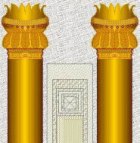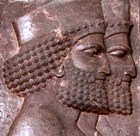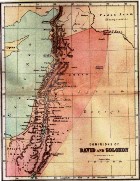Buildings in ancient Israel: King Solomon’s Temple, Jericho’s walls, & Megiddo’s gate
Solomon’s Temple in Jerusalem
What was Solomon’s Temple like?
The Bible (1 Kings 6:2-3) says King Solomon built the First Temple in Jerusalem, one of the Bible’s most ancient buildings, as a long-room temple with
- a vestibule hall and
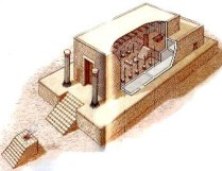
A reconstruction of Solomon’s Temple in Jerusalem
- a separate room for the Holy of Holies (you can see this in the floor plan below).
There were two columns in the vestibule hall, and splendid furnishings and fittings. The walls were covered with wooden panels embellished with gold-leaf overlay.
The Temple faced east. It was oblong and consisted of three rooms:
- a porch or vestibule
- the main room of religious offering, or Holy Place
- the Holy of Holies in which the Ark rested.
A storehouse surrounded the Temple except at its front (east) side.
What about altars in Solomon’s Temple?
The First Temple had five altars:
- one at the entrance of the Holy of Holies,
- two others within the building,
- a large bronze one in front of the porch, and
- a large tiered altar in the courtyard.
Within the Holy of Holies, two cherubim of olive wood stood with the Ark. People believed this inner sanctuary was the dwelling place of the Divine Presence.
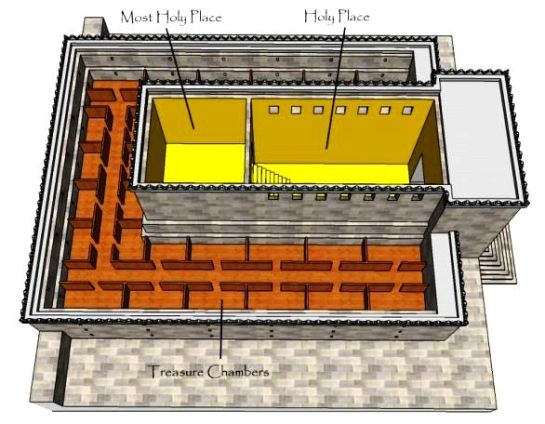
Floor plan of Solomon’s Temple (above)
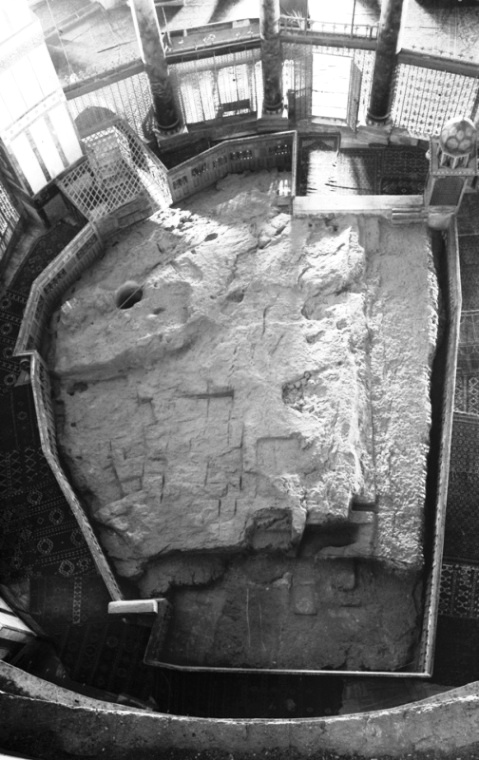
The actual stone on which the Temple of Solomon is said to have stood

Floor plan of Solomon’s Temple (above)

The actual stone on which the Temple of Solomon is said to have stood
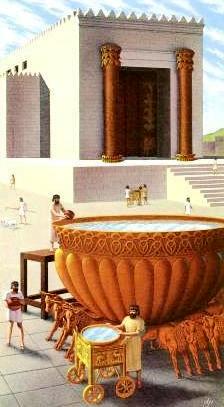
Artist’s reconstruction of the front facade and courtyard of Solomon’s Temple
In 604BC and then again in 597BC Jerusalem was attacked and captured by Nebuchadnezzar II of Babylon. The city was sacked, the Temple treasure was stolen, and the Temple of Solomon was totally destroyed.
Jericho’s ancient walls: did they really fall?

Man blowing a Shofar, photograph by Roie Galitz; this was the ‘trumpet’ that collapsed Jericho’s walls
‘On the seventh day the people rose early at dawn, and marched around the city seven times. They shouted, and the trumpets were blown.
As soon as the people heard the sound of the trumpets, they raised a great shout, and the wall fell down flat; so the people charged straight ahead into the city and captured it.’ (Joshua 6)
Did the walls of ancient Jericho come tumbling down at the sound of Joshua’s horn? In Joshua 2:1 he commands his soldiers to sneak into the city and explore it. And after this it is destroyed. Archaeology shows that the walls did indeed come tumbling down. There is evidence of a collapsed stone and mud brick support wall.
There is also evidence of destruction by fire. Archaeological teams have discovered a number of storage jars containing charred grain from the last Canaanite city that existed at ancient Jericho. This would show that the city was conquered at harvest-time and then burned.
But it is impossible to tell whether this destruction was caused by invasion or earthquake. Possibly both – and why not? Both were part of God’s plan for his people.
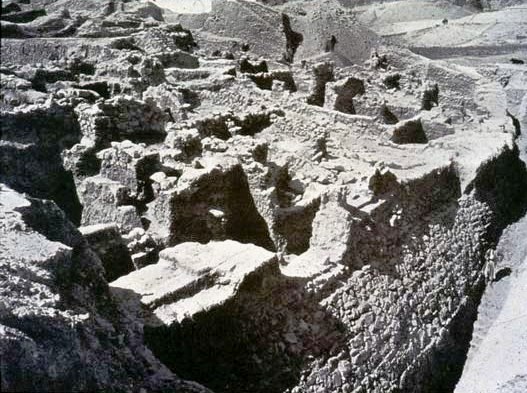
Excavated revetment wall at ancient Jericho; Rahab the prostitute must have lived in one of the buildings against this wall. You can get an idea of the scale by comparing the city walls with the human figure at the bottom right of this 19th century photograph
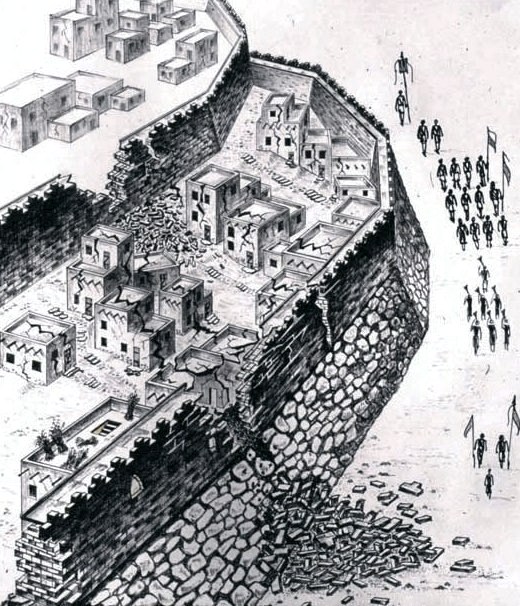
Artist’s reconstruction of the fallen walls in Bible-era Jericho; contrast this drawing with the photograph above it. The city may already have been in a state of disrepair when Joshua captured it.
Ancestor worship? See the Youtube video The Skulls of Jericho
How would you attack the Megiddo Gate?
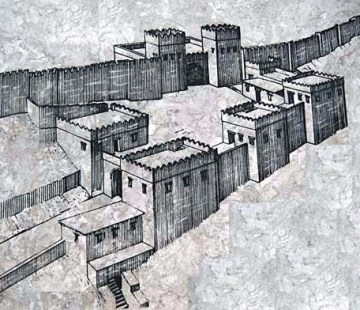
The gates of Megiddo in Bible times
How would you attack a fortress-city? The most vulnerable spot was the gateway. This was where an invader would try to break in. So city gates became massive.
At Megiddo (and also at Samaria and the ancient city of Lachish) the city gate was guarded by a double set of towers. From these the enemy could be pelted with a range of missiles – spears, arrows, stones, etc. This kept him from coming too close to the gate.
What about battering rams? If the invader used something like a covered battering ram, he could get close to the gate and break it down.
If he got this far he would find himself channeled into a passage between the gates. It was not a good place to be. It had chambers on either side that acted as firing positions for the defenders. The attacker found himself exposed to crossfire from two, three or four directions.
What was the main city gate like? Even if the entrance was defended by a single gate tower, it was usually a very strong and deep structure with internal guard rooms and upper-floor firing apertures so as to harass the enemy inside the gate. The gate towers had at least a double set of gates on the outside and on the inside.
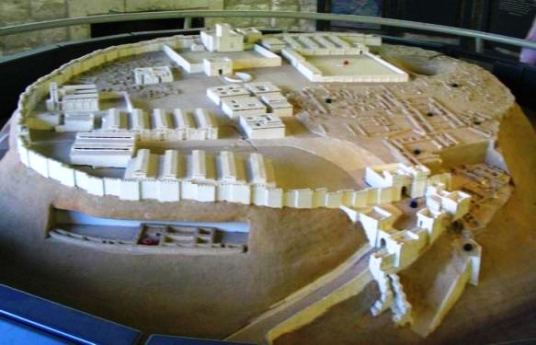
Reconstruction of the ancient city of Megiddo, showing the city, its walls and the massive gateway
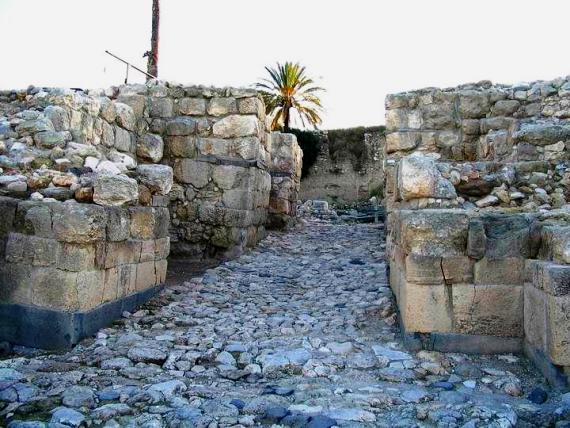
The massive defensive gateway at the ancient biblical city of Megiddo
Search Box
![]()
Bible Study Resource: Famous buildings of the Bible
Solomon’s Jerusalem Temple, Jericho walls, Megiddo’s gates
Ancient Bible buildings
© Copyright 2006
Elizabeth Fletcher

